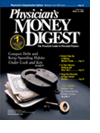Grasp the New Economic Stimulus Package
With the recent passage of theeconomic stimulus package,many investors are anxious totake advantage of possible tax breaks andinvestment incentives. But while the latestplan is something you should certainlytake into consideration, you should becareful not to let it dictate your futureinvestment decisions.
Effects of Rate Cuts
To better understand how the stimuluspackage may affect individual investors,let's take a closer look at some ofits key elements. One of the major highlightsfor the average investor is theacceleration of previously enacted incometax cuts. Rate cuts that were originallyscheduled to roll out from 2004through 2010 will now be put intoeffect, retroactive to Jan 1, 2003. Taxwithholding tables were adjusted by July1, 2003, so wage earners had less taxtaken out of their paychecks.
To illustrate the effects of these ratecuts, consider the following examples.Previously, the highest marginal incometax rate for a married couple was 38.6%.However, the new law has reduced this to35%. As a result, a couple with a combinedannual taxable income of $320,000will save over $11,500. On the other endof the scale, the lowest tax bracket willcontinue to be 10%, but will now beextended to the first $14,000 of taxableincome for a married couple, rather thanthe first $12,000.
Double Taxation Reduction
Another major component of thestimulus package that could have significant implications for individual investorsis the reduction of the double taxationof dividends. While dividends will continueto be taxed at both the corporate andshareholder level, investors will now betaxed at a maximum rate of only 15%.Previously, investors paid a rate equal totheir personal income tax levels, whichcould run as high as 38.6%.
If a company makes a profit thatamounts to $100 for each shareholder,that $100 would be taxed at the 35% federalcorporate tax rate, leaving $65 for thecompany to distribute to the shareholdersas a dividend. Next, the shareholder mustpay taxes on the $65 dividend check, attheir individual rate. Assuming that rate is30%, the shareholder is left with just$45.50. So under the old rules, more thanhalf the profit is lost to taxes. However,under the new economic stimulus package,the shareholder will be taxed at amaximum rate of 15% going forward,meaning they would have $55.25 leftafter the two rounds of taxes.
Future Fiscal Decisions
The end result of both the income taxrate cuts and the reduction of the tax ondividends is more money for investors.Whatever they choose to do with themoney, taxpayers will have more personalincome at their disposal.
While both of these aspects to thenew economic package can work wellfor investors, it's important to rememberthat investment decisions should bebased on their own merit, not solely ontax considerations. You should meet withyour tax advisor prior to making anychanges in your investment strategies.Now would be a good time to speak toyour financial consultant to take a lookat your overall financial position. Yourconsultant can help you plan long-termstrategies that will put you in a positionto take advantage of any new breaksthat come your way.
Joseph F. Lagowski is vice president,investments, and a financialconsultant with AG Edwards inHillsborough, NJ. He welcomesquestions or comments at 800-288-0901 or www.agedwards.com/fc/joseph.lagowski. This article was providedby AG Edwards & Sons, Inc, member SIPC.
